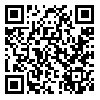1. Parsa M. Bonyadhaye ravanshenasi (ravanshenasi omoomi) [Psychological foundations (general psychology)]. Tehran: Sokhan Publications; 2015. [Persian]
2. Vogel M, Van Ham M. Unpacking the relationships between impulsivity, neighborhood disadvantage, and adolescent violence: an application of a neighborhood-based group decomposition. J Youth Adolescence. 2018;47(4):859–71. [
DOI]
3. Kras M, Youssef GJ, Garfield JBB, Yücel M, Lubman DI, Stout JC. Relationship between measures of impulsivity in opioid-dependent individuals. Pers Individ Dif. 2018;120:133–7. [
DOI]
4. Dadsetan P. Developmental psychopathology psychology: from infancy through adulthood. Tehran: Samat Publications; 2020. [Persian]
5. Seif AA. Modern educational psychology, psychology of learning and instruction. Tehran: Roshd Publications; 2021. [Persian]
6. Shafiabadi A, Naseri GH. Nazariye haye moshavere va ravan darmani [Theories of counseling and psychotherapy]. Tehran: University Publishing Center; 2020. [Persian]
7. Ellis A. Overcoming destructive beliefs, feelings, and behaviors: new directions for rational emotive behavior therapy. Amherst, NY: Prometheus Books; 2001.
8. Shariatmadari A. Ravanshenasi tarbiati [Educational psychology]. Tehran: Amirkabir Publications; 2019. [Persian]
9. Afzalnia MR, Behpazhouh A. Behdashte ravani khanevade [Family mental health]. Tehran: Nasl-e No-Andish Publications; 2007. [Persian]
10. Veilleux JC, Lankford NM, Hill MA, Skinner KD, Chamberlain KD, Baker DE, et al. Affect balance predicts daily emotional experience. Pers Individ Dif. 2020;154:109683. [
DOI]
11. Mahmoodinia S, Sepahmansoor M, Emamipoor S, Hasani F. Effect of aggression replacement training on impulsivity and positive and negative cognitive emotion regulation strategies in delinquent adolescent boys. Journal of Psychological Studies. 2019;15(2):93–110. [Persian] [
Article]
12. Narimani M, Abbasi M, Abolghasemi A, Ahadi B. A study comparing the effectiveness of acceptance/commitment by emotional regulation training on adjustment in students with dyscalculia. Learning Disabilities. 2013;2(4):154–76. [Persian] [
Article]
13. Shoarinazhad AA. Ravanshenasi roshd [Developmental psychology]. Tehran: Etela’at Publications; 2013. [Persian]
14. Sevari K, Shanchi SH. The effectiveness of self-awareness skills training in increased impulse control and reduced tendency to drug use. Journal of Research on Addiction. 2017;11(42):269–80. [Persian] [
Article]
15. Brännström L, Kaunitz C, Andershed AK, South S, Smedslund G. Aggression replacement training (ART) for reducing antisocial behavior in adolescents and adults: a systematic review. Aggress Violent Behav. 2016;27:30–41. [
DOI]
16. Hooman HA. Structural equation modeling with LISREL application. Tehran: Samt Pub; 2018. [Persian]
17. Jones RG. A factored measure of Ellis’ irrational belief system with personality and maladjustment correlates [PhD dissertation]. [Texas]: Technological College; Texas University; 1968.
18. Ebadi GH, Motamedin M. Barrasi sakhtare ameli azmoon bavar haye gheyre manteghi Jones dar shahre Ahvaz [Investigating the factor structure of Jones irrational beliefs test in Ahvaz]. Journal of Knowledge and Research in Applied Psychology. 2005;23:73–92. [Persian]
19. Barratt ES, Stanford MS, Kent TA, Alan F. Neuropsychological and cognitive psychophysiological substrates of impulsive aggression. Biol Psychiatry. 1997;41(10):1045–61. [
DOI]
20. Ekhtiari H, Safaei H, Esmaeeli Djavid GH, Atefvahid MK, Edalati H, Mokri A. Reliability and validity of Persian versions of Eysenck, Barratt, Dickman and Zuckerman Questionnaires in assessing risky and impulsive behaviors. Iranian Journal of Psychiatry and Clinical Psychology. 2008;14(3):326–36. [Persian] [
Article]
21. Garnefski N, Kraaij V. Cognitive emotion regulation questionnaire – development of a short 18–item version (CERQ–short). Pers Individ Dif. 2006;41(6):1045–53. [
DOI]
22. Besharat MA, Bazzazian S. Psychometric properties of the cognitive emotion regulation questionnaire in a sample of Iranian population. Journal of Advances in Nursing & Midwifery. 2014;24(84):61–70. [Persian] [
Article]
23. Becker JM, Klein K, Wetzels M. Hierarchical latent variable models in PLS-SEM: guidelines for using reflective-formative type models. Long Range Planning. 2012;45(5–6):359–94. [
DOI]
24. Veilleux JC, Lankford NM, Hill MA, Skinner KD, Chamberlain KD, Baker DE, et al. Affect balance predicts daily emotional experience. Personality and Individual Differences. 2020 Feb 1;154:109683. [
DOI]
25. Mahmoudinia S, Spahmansour M, Emamipour S, Hassani F. The effect of aggression alternative education on impulsivity and positive and negative cognitive strategies of emotion regulation in delinquent adolescent boys. Journal of Motaleate Ravanshenakhti. 2019; 15(2): 93-111. [Persian] [
DOI]

 ، حسن اسدزاده*2
، حسن اسدزاده*2 
 ، افشین صلاحیان3
، افشین صلاحیان3 




